The following list will provide a few interview questions asked in the different interviews for a Piping Engineering (Stress) position. Answers to most of the questions are added here for reference. I hope you will be able to find remaining answers from ASME B 31.3 and any piping engineering textbooks or from the piping handbook. In case you could not find out a specific answer reply in the comments section.
Kind request to Readers to list other questions that you might have faced/ received in some interviews in the comments section to help fellow colleagues.
Piping Stress Interview Questions with Answers
1) How to make a critical line list or flexibility log? How will you decide the critical line list with help of ASME B31.3?
Ans: Basis for deciding Stress critical lines
2) How to decide Stress critical systems for analysis using Caesar II?
Ans: https://whatispiping.com/basis-for-deciding-stress-critical-lines
3) Which lines can be eliminated from formal Stress analysis?
4) Can you make a typical Sketch including supporting for column piping? How to decide how many load-bearing clip-supports to be used?
Ans: https://whatispiping.com/column-piping
5) Draw a typical Sketch & supporting arrangement for tank farm piping? How tank Piping analysis is different from normal pressure vessel connected piping system analysis?
Ans: https://whatispiping.com/?s=Tank
6) What is SIF? Formulas for In-plane, out-plane SIF for elbow as per ASME-B31.3?
And: https://whatispiping.com/stress-intensity-factor-sif-flexibility-factor-asme-b-31j/
7) Value of SIF, Flexibility factor for Bend?
Ans: https://whatispiping.com/bend-sif/
8) What are the necessary documents required for stress analysis?
And: https://whatispiping.com/basics-of-pipe-stress-analysis
9) Why a Spring hanger is used? Can you write the formula for spring HL, CL & variability?
Ans: https://whatispiping.com/spring-hangers-common-interview-questions-with-answers
10) What are the different types of supports used in piping systems?
Ans: https://whatispiping.com/supporting-of-piping-systems
11) What do you know about Expansion joints and their types? When do these come into the picture?
Ans: https://whatispiping.com/design-considerations-expansion-bellow. Refer to EJMA for more details.
12) What are the normal types of load cases? Write the load cases for a typical stress system using a static method of seismic and wind.
Ans: https://whatispiping.com/load-cases
13) What is slug flow? What parameters are required to calculate the Slug force? How do you perform Slug flow analysis using Caesar II? Do you design for vibration arresting along with slug?
Ans: https://whatispiping.com/?s=slug
14) What are the dynamic restraints? What is snubber and when do you use a snubber?
Ans: https://whatispiping.com/dynamic-restraints
15) What is the minimum swing allowed in the top-mounted hanger? What will you do if that amount exceeds in a typical piping system?
Ans: https://whatispiping.com/spring-hangers-common-interview-questions-with-answers
16) What is cold pull and why it is used?
Ans: https://whatispiping.com/?s=cold+pull
17) What is the difference between a Variable Hanger and a Constant Hanger? What is the variability of the Constant Spring hanger?
Ans: https://whatispiping.com/spring-hangers-common-interview-questions-with-answers
18) What are the inputs required for stress analysis? What do you check in Caesar’s analysis of a piping system?
And: https://whatispiping.com/basics-of-pipe-stress-analysis
19) What do you mean by the term “liberal stress”?
20) What is the hot-cold philosophy (operating standby philosophy) for a pump? Have you heard the term Pump alignment? How do you ensure proper alignment of pumps with piping during analysis? What considerations do you make?
Ans: Stress Analysis of Pump Piping (Centrifugal) System using Caesar II
21) Write the equation for SE in terms of Sb and St from ASME B31.3.
Ans: https://whatispiping.com/asme-b-31-3
22) What is the major difference between WRC 537 and WRC 297?
Ans: https://whatispiping.com/wrc-107-and-wrc-297
23) How Anchor load for a rack is calculated at the initial phases of the project? What are the normal guidelines assumed?
24) Draw a typical control valve station layout and show its supporting.
Ans: https://whatispiping.com/control-valves/#Control_Valve_Assembly
25) How pump piping is routed and supported?
26) How you will decide the position of the anchor bay in rack piping?
27) Which side (suction or discharge) in the case of a pump piping system is more critical from a stress point of view? Justify the answer.
28) What are the main factors that decide the support span?
Ans: https://whatispiping.com/pipe-support-span
29) What does API 610 explain about allowable nozzle loads for a Centrifugal Pump?
30) Can you show the typical layout and support for PSV lines?
31) What is the effect of friction in Piping stress analysis?
Ans: https://whatispiping.com/co-efficient-of-friction
32) How does the layout of a pump piping change with changes in temperature?
33) Why the allowable for primary stress is different from that of secondary stress?
34) Is the stress due to the seismic anchor movement occasional stress? Explain with proper reason.
35) What is meant by the sentence ”primary stress is not self-relieving but secondary stress is”? Explain in detail the meaning of the term “ self relieving”.
36) Will SIF increase or decrease with an increase in pressure, other parameters be kept constant? Justify your answer.
37) What is the role of the ‘Y’ factor in the pressure thickness equation of B31.3 and B31.1?
Ans: https://whatispiping.com/asme-b-31-3
38) Is the pressure thickness equation for bends the same as that of a straight pipe in B31.3?
39) How does B31.3 define the terms Weldolet and Sweepolet?
40) Between a short and a long radius bend, which one has higher flexibility and why?
Ans: https://whatispiping.com/bend-sif
41) What does B31.3 tell about SIF for Sockolet and reducer?
42) Explain the role of Appendix V of B31.3.
43) Does B31.3 allow a stress limit of 1.33Sh in the PSV pop-up case or is it 1.20 Sh?
44) Explain how to model a snubber in CAESAR II.
Ans: Snubber modelling in Caesar II
45) Briefly explain the modeling of Sway Brace is CAESAR II.
Ans: Modeling of Sway Braces in Caesar II for stress analysis
46) What is the basic difference between a snubber and a sway brace in terms of applicability? Have you used these restraints during your analysis?
Ans: Use of Sway Brace, Strut and Snubber for pipe supporting
47) Explain with a reason as to what should happen to the SIF and Flexibility factor of a bend when a trunnion is attached to it.
48) Explain the terms SIF and FLEXIBILITY factor.
49) Why is SIF “not so significant” with primary loading?
50) What happens to the SIF of a reinforced connection if the thickness of reinforcement increases beyond 1.5 times the header thickness?
51) What special note does B31.3 provide for SIF of welding tees (B16.9)?
52) Explain with reasons as to which one has having higher SIF: a 45 bend or a 90 Bend?
Ans: Piping Elbow or Bend SIF (Stress Intensification Factor)
53) Explain with reasons as to whether for a non-90-degree branch, the same SIF can be taken as that for a 90 branch.
54) If the thickness of the header of a branch connection increases, what happens to its SIF, other parameters kept constant?
55) What are the methods for flange leakage checking? Write equations used for flange leakage checking in the pressure equivalent method.
Ans: Methods for Checking Flange Leakage
56) What are the major differences between ASME B 31.3 and B31.1?
Ans: Difference between ASME B 31.3 and B 31.1 (B31.3 vs B31.1)
57) Place the following lines in Rack and show the placement of the expansion loop.
- a) A 16-inch High-pressure steam line
- b) A 6-inch Low-pressure steam line
- c) A 10-inch Medium pressure steam line
- d) A 30-inch flare line
- e) An 8-inch process line and
- f) A 24-inch cooling water line.
58) How to decide the Spring height for a top-mounted Spring hanger? What are the attachments used?
59) How do you calculate SIF for 45-degree lateral connections entering into a flare header?
60) What are the transfer lines? Why does the stress analysis of transfer lines are considered critical?
61. If a power plant is designed inside a Process refinery then where the specification break between ASME B31.1 & ASME B31.3 should occur?
62. What is the category M fluid service? Provide some examples.
Ans: What is Category M Fluid Service for Process Piping Design?
63. What will be the consequences of steam piping having a low pocket but not having a steam trap?
64. When and why the reducer of a pump suction piping is installed in bottom flat condition?
65. If you found a specification break (at flange) between carbon steel and stainless steel in a typical P&ID. What are the additional arrangements that a piping engineer should make for this?
66. Assume a straight pipe of length L anchored at both ends. When a temperature change occurs the anchor force at one anchor becomes F1. Now the length of the same pipe increases to L2 and with a similar temperature change anchor force becomes F2. What is the relation between F1 and F2?
67. What is the Piping Speciality item? How many types of piping specialty items are used in piping engineering? Can we include them in the standard piping specification, and explain with reason?
Ans: https://whatispiping.com/piping-specialty-items/
68. Why does the sustained sagging for steam lines are limited to 2.5 mm?
69. What is a “Double block and bleed” valve? When such type valves are required?
Ans: Double Block and Bleed Valve: Introduction, Working, Benefits, Applications
70. In a normal tie-in where do you insert the spectacle blind? a) before the block valve and towards the new plant or b) after the block valve and towards the existing plant. Explain why.
71. What is the difference between a pipe elbow and a bend?
72. Among the following which material has the highest coefficient of thermal expansion? A) Carbon steel b) Cast Iron c) Duplex steel d)Stainless steel e) Galvanized Carbon steel
73. What are the major parameters to be reported in the support tag for a Shoe/Saddle type support?
74. What are the Metallic expansion joints? When they are used and when they could be avoided?
Ans: Pipe Expansion Joint Details: Components, Types, Materials, Manufacturers
75. What is hot sustained stress? Why do we check it? Do we need to check expansion stress for the hot sustained cases? What is Alt-Sustained Stress?
Ans: Hot Sustained Stress (Lift-Off) Checking in Caesar II
76. What is the philosophy of arranging pipes in the Pipe rack and why? Normally what % of the area is kept reserved for future expansion?
77. What are the major difficulties faced by a stress engineer while analyzing two vertical reboilers connected with a single column?
Ans: Stress Analysis of Vertical Reboiler Piping using Caesar II
78. What are the different types of combination methods available in Caesar II? What is the difference between the Scalar and Absolute method?
79. Are process plant water lines considered pressure piping systems?
80. For what fluid service category may a hydro test be waived off as per B31.3?
81. Check the following load cases and tell me what is the difference between load cases L3 and L4.
- L1. W+T1+P1 OPE
- L2. W+P1 SUS
- L3. L1-L2 EXP
- L4. T1 EXP
82. Which comes first?–Stress or Strain?
Ans: Stress or Strain: Which comes first?
83. What is the difference between Stress and Pressure?
Ans: 10 Differences between Pressure and Stress
84. What are the major differences between a Pipe and a Tube?
Ans: Comparison of Pipe and Tube (Pipe vs. tube)
85. What is seismic co-efficient? How this is decided?
Ans: Static Method of Seismic Analysis of Piping System using Caesar II
86. What is the wind shape factor? How the value of the wind shape factor is decided?
Ans: Static Method of Wind Analysis of Piping systems in Caesar II using Pressure vs. elevation Method
87. Why does the manufacturer produce pipes with OD constant for a specific size and varying ID?
88. What are the major responsibilities of a stress engineer?
Ans: What does a Pipe Stress Engineer need to know?
89. What are the major differences between primary and secondary loads in Piping?
Ans: Difference between Primary loads and Secondary loads in a Piping System
90. Do you consider the vertical thermal growth for modeling the fired heater in Caesar II? Explain with reason.
91. Why is the dummy of a piping system also insulated for a cold insulated piping system but not insulated for the hot insulated piping system?
92. What are the major parameters and process inputs required for performing dynamic slug flow analysis?
Ans: Slug Flow Analysis Using Dynamic Spectrum Method in Caesar II
93. Which parameters do you seek from the civil department for performing underground piping analysis in Caesar II? Describe briefly the method of performing underground piping analysis using Caesar II. What are the outputs to check and what to interpret from Caesar results?
Ans: Basics for Stress Analysis of Underground Piping using Caesar II
94. How to calculate pipe thickness for an externally pressured piping system?
Ans: Pipe Thickness Calculation of Straight Pipe under External Pressure/ Vacuum Pressure Condition.
95. What do you mean by the term flexibility? How to ensure that the flexibility of a piping system is appropriate? What are the means for increasing flexibility? What will happen if more flexibility is provided to a piping system?
96. As per code ASME B 31.3, how many types of fluid services are available?
Ans: 11 most important questions & answers from ASME B 31.3 which a Piping stress engineer must know
97. What are the code cases for ASME B 31.3?
98. Describe step-by-step methods for modeling a sway brace in Caesar II.
Ans: Modeling of Sway Braces in Caesar II for stress analysis
99. In which way do PDS, PDMS, E3D, and SP3D differ? Which one is the most user-friendly?
Ans: Why is Aveva PDMS better than Intergraph PDS?
100. How to calculate the piping stress man-hour for a specific project?
Ans: Piping Stress Man hour estimation (Detailed engineering) process for a specific Project
101. Can we exceed the design pressure of a piping system more than its design pressure? If yes then in what condition?
102. What is the limitation of using the PTFE slide plate? What can be done in such a situation?
103. How to decide whether a hydro test or pneumatic test will be performed for a piping system?
Ans: Pressure Tests of Piping systems-Hydrotest Vs Pneumatic Test
104. What is the bourdon effect of a Piping system? When does this effect become critical?
Ans: Importance of Bourdon Effect, True and Effective Axial Force
105. How do you check dummies or trunnions for any project? Can you write the formulas used for this checking?
Ans: Trunnion Checking or Dummy Checking during stress analysis of a piping system
106. What is the difference between the pressure safety valve and the pressure relief valve?
Ans: Pressure Relief Valve: Definition, Types, Working, Location, Sizing, Codes and Standards (PDF)
107. Why do you consider slug flow in a piping system as critical?
Ans: Static Analysis of Slug flow: A Presentation for Beginners
108. What is the function of a gasket in a flanged joint?
Ans: Functions of Gaskets for leak-proof Flanged joints
109. Why sustained stress is considered as primary stress?
110. What are the major differences between SIF and SCF (Stress Concentration Factor)?
111. Let’s assume from a 24-inch pipe header two tappings, one 2 inches, and another one 4 inches, are taken. At the interconnection point in which case the SIF will be higher?
112. What is the industry-accepted procedure for transferring anchor load for intermediate anchors (anchor in between two loops) where normally Caesar shows very less value?
113. How to analyze stress packages when a D/T ratio for the pipe exceeds 100?
Ans: Applicability of Caesar II for stress analysis of lines having D/t ratio more than 100
114. Arrange the following piping elements with respect to flexibility and SIF (either increasing or decreasing order). Assume pipe size and thickness are constant.: 1.5D bend, 1D bend, Straight Pipe, 4D bend, 10D bend.
Ans: Piping Elbow or Bend SIF (Stress Intensification Factor)
115. What is primary membrane stress?
116. Which one is more flexible: 45° bend or 90° bend? Which one has more SIF?
Ans: Piping Elbow or Bend SIF (Stress Intensification Factor)
117. Can we call piping shoe a pipe component as per the code? Explain with reason. What is your opinion about the RF pad in this respect?
118. What does the piping code say about the operation and maintenance of the piping system?
119. You want to make some changes in the existing plant and want to add a new line by hot tapping. From which point the ASME B 31.3 code will be applicable?
120. What are the terms Code Case and Code Interpretation signifies?
121. How to model an Air fin Fan Cooler in Caesar II? Why do you consider equipment weight in AFC modeling while for other heat exchangers, we do not consider it? What code needs to be followed for nozzle load checking and what the code says about nozzle load checking? Why do we need thrust blocks for the air-fin fan cooler?
Ans: Air Cooler Piping Stress Analysis using Caesar II [With PDF]
122. Can you write the NEMA equipment nozzle equation sets? What are the major differences between API 617 and NEMA SM 23 from the stress point of view? Draw a typical steam turbine piping layout.
Ans: Turbine Piping: Definition, Working Philosophy, Layout Consideration, Stress Analysis, NEMA SM 23
123. Which standard is used for designing a plate-fin heat exchanger? Which table is normally followed for nozzle load checking?
124. How do you consider tank settlement while piping stress analysis? Is it primary or secondary stress? Do you add tank settlement with sustained load cases? If yes why? What code says about tank settlement? What is tank bulging and why does it happen?
Ans: Tank Settlement for Piping Stress Analysis; An article on Tank Bulging effect or bulging effect of tank shells
125. Draw a typical layout of a line connected with a fired heater (Heater Piping)? Which standard is used for allowable nozzle loads?
Ans: Modeling Connection to Fired Heater
126. What are the major differences between B 31.3 edition 2018 and 2016?
Ans: Few Changes in the 2018 Edition of ASME B 31.3 2018 with respect to 2016 edition
127. What standard say about rotary equipment alignment checks? What are the criteria mentioned in that standard? While the alignment checking, spring will be in locked or as-designed condition?
Ans: Alignment Check Methodology for Rotary Equipment using Caesar II
128. Calculate the number of loops for a 400-meter-long carbon steel pipe having a temperature of 400-degree centigrade running over a pipe rack.
129. How do you calculate PSV reaction forces in the absence of reaction force in vendor data? What is the major difference between the pressure safety valve and the pressure relief valve?
Ans: Stress Analysis of PSV connected Piping Systems Using Caesar II
130. Do you perform a trunnion check while analyzing a stress system? What are the associated formulas for trunnion checking?
Ans: Trunnion Checking or Dummy Checking during stress analysis of a piping system
131. What is the equation for calculating seismic co-efficient? How to calculate the wind force?
Ans: Static Method of Seismic Analysis of Piping System using Caesar II; Static Method of Wind Analysis of Piping systems in Caesar II using Pressure Vs elevation Method
132. What is a guided cantilever method? What is the importance of this method?
133. What does Appendix F of API 610 ensure? What are the equations? What does the standard say for vertical inline pumps?
134. What do you mean by weld joint strength reduction factor and quality factor? What is the importance of these factors?
135. While providing preliminary rack loading what assumptions do you consider?
136. What was the most critical system you analyzed in the last company? Draw the layout? What changes did you recommend? What is the temperature and pressure of that line?
137. What are the minimum load cases required to consider while performing a stress analysis of a vertical reboiler-connected piping system?
Ans: Stress Analysis of Vertical Reboiler Piping using Caesar II
138. Have you performed a stress analysis of reciprocating compressor-connected lines? What are the considerations? What is the minimum frequency you achieved before sending for a pulsation study? How do you consider up to what length of piping is to be sent for the pulsation study?
139. What actually do you check during flange leakage checking by NC 3658 method?
Ans: Flange Leakage Evaluation based on NC 3658.3 Method method using Caesar II
140. Can we reduce the hydro-test pressure of the pipe to less than 1.5 times the line design pressure? If yes then in what condition?
141. What do you mean by the term Flow-Induced Vibration or FIV?
Ans: What is Flow-Induced Vibration (FIV) in a Piping System
142. What is AIV? What are the differences between FIV and AIV?
Ans: What is Acoustic-Induced Vibration or AIV?
143. How to Calculate Length, Angle of Cut, Weight, and Cut-back of the Miter for a Miter Bend?
Ans: MITER BEND: How to Calculate Length, Angle of Cut, Weight, and Cut-back of the Miters?
144. How to Calculate Tank Dike Wall Height?
Ans: Case Study of Tank Farm Design and Dike Wall Height Calculation
145. What are the differences between ASME B 31.4 and ASME B 31.8?
Ans: Differences between ASME B 31.4 and ASME B 31.8
146. What is the meaning of the Pressure Temperature Rating and Flange rating of ASME Flanges?
Ans: Pressure Temperature Rating and Flange rating of ASME Flanges
147. What are the differences between Seamless and Welded Pipe?
Ans: 13 major differences between Seamless and Welded Pipe
148. What are the major Considerations for Storage Tanks Nozzles Orientation?
Ans: Considerations for Storage Tanks Nozzles Orientation
149. Have you used Flexible Sleeve Coupling in Stress Analysis?
Ans: Stress Analysis of Water Pump Station Piping using Flexible Sleeve Coupling
150. Have you heard the term Rupture Disk? How it differ from a PSV?
151. What is a Flange Insulation Gasket Kit? Why are these used?
Ans: Flange Insulating Gasket Kits for Industrial Application
152. How do you model the supports of large diameter pipes for example say 42 inch pipe?
Ans: Guidelines for Modeling and Supporting of Large Diameter Pipes / Pipelines
153. What are the differences between Piping and Pipeline?
Ans: Comparison between Piping and Pipeline Engineering
154. Have you come across the term “Barred Tee”? How does it differ from a normal Tee?
Ans: Difference between Tee and Barred Tee
155. What is Pipe Thermal Bowing?
Ans: Piping Thermal Bowing Consideration in Caesar II with an example
156. What is the meaning of Surge or Water Hammer in the Piping System?
Ans: An Introduction to Pressure Surge Analysis
157. What are the main differences between API 650 and API 620 tanks?
Ans: Difference between API 650 and API 620 Tanks: API 650 vs API 620
158. What are the different types of Stresses in a Piping System?
Ans: Types of Stresses in a Piping System
159. Have you ever performed the stress analysis of Surface-laid pipelines?
Ans: STRESS ANALYSIS OF SURFACE LAID PIPELINES
160. Can you tell the differences between ASME B 16.47 Series A and Series B flanges?
Ans: Difference between ASME B 16.47 Series A and Series B Flanges
161. What is the meaning of Piping MTO?
Ans: Introduction to Piping MTO, BOM, BOQ & MTO Stages
Piping Interview Questions for Layout Engineers
162. Draw a typical pump suction piping layout with supports considering 3 pump systems from a tank.
163. Have you used eccentric reducers flat-side on top position? Give examples.
164. What is the meaning of steam trap and drip legs?
Ans: Steam Traps: Definition, Types, Selection, Features, Codes & Standards; Drip Legs: Definition, Purpose, Configuration, Selection, Installation, and Sizing (PDF)
165. What is the meaning of Double Block and Bleed valve?
166. How to arrange pipes in a pipe rack?
167. What is the function of a deluge valve?
168. What do you understand by the FEED project? What’s the difference with detailed engineering?
Ans: Front End Engineering Design or FEED (PDF)
169. What is the use of a Surge Relief valve?
Ans: Surge Relief Valve: Definition, Function, Types, Sizing, Selection
170. What is a Kick-Off Meeting?
Ans: Kick-Off Meeting: An Overview
171. Why is a slug catcher used in piping or pipeline systems?
Ans: Slug Catcher: Definition, Types, Selection & Design Steps
172. A chemical plant has been operating fine for the last 10 years. Now a part of the pipe in between two two flanges will be replaced during the next shutdown. The length of the pipe to be replaced is 50 m. Which piping code should be followed for the entire piping system design?
173. Let’s assume a material (DSS) is having a Sy value of 550 MPa. What will be its Sc value?
174. As per stress analysis considerations, What’s new in ASME B31.3-2022?
175. What are the criteria for applying the NC 3658.3 method? Can we apply this method for flange leakage checking of 30″, 150 rating flanges?
176. What is low-yield strength bolting?
177. What is the major difference between series A and Series B flanges in ASME B16.47?
Ans: https://whatispiping.com/difference-asme-b-16-47-series-a-and-series-b-flanges-series-a-vs-series-b/
178. What is the basis for pump allowable nozzle loads in API 610?
179. What is the maximum value of Reinforcement that contributes to SIF reduction as per the ASME B31J code?
Piping Interview Questions for Construction Engineers
- What do you know about pipe welding positions? How many types of pipe welding positions are there?
- What is the meaning of Pipe fabrication?
- What is the difference between piping installation and erection?
- What are the differences between 304 and 316 stainless steel?
- What is a thrust block? What are its design considerations?
- Ans: Thrust Block Design
- What is FRP Piping?
- What is an HDPE Pipe?
- Ans: What is HDPE Pipe?
- What are the differences between bolts and screws?
- Is there any difference between carbon steel and stainless steel?
- What do you know about Ductile iron Pipe?
Some more piping stress interview questions with answers for you.

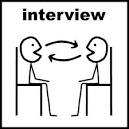





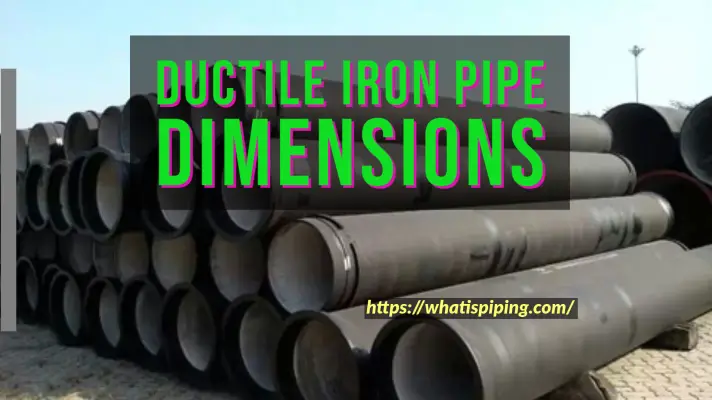
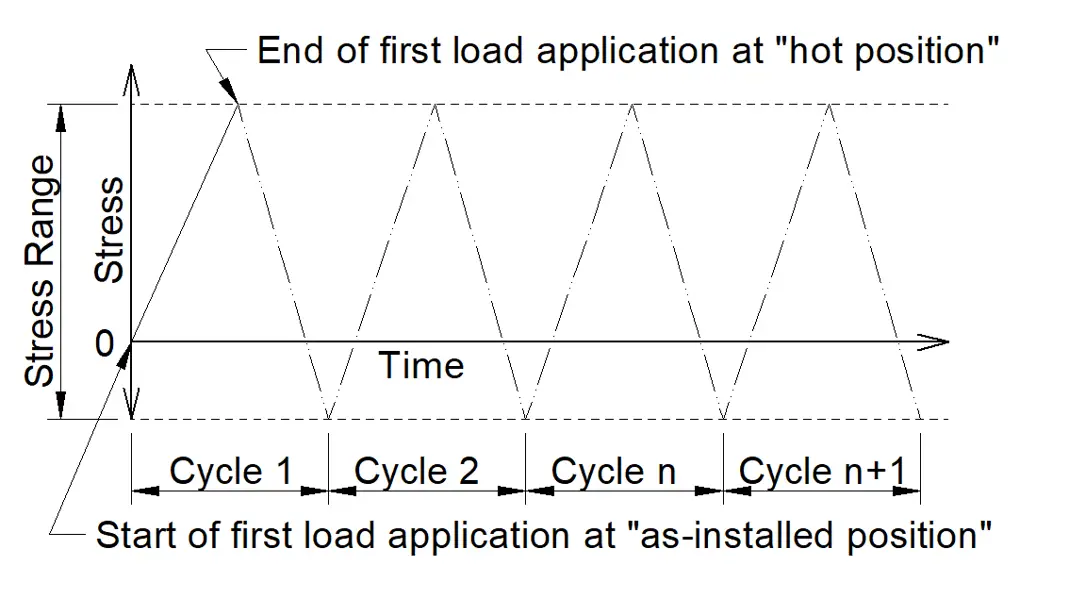

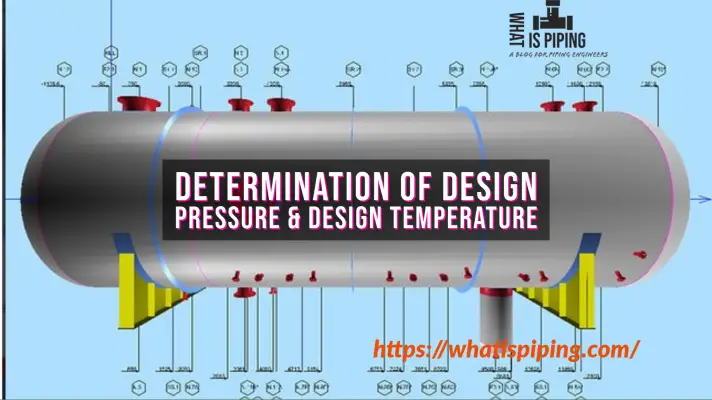
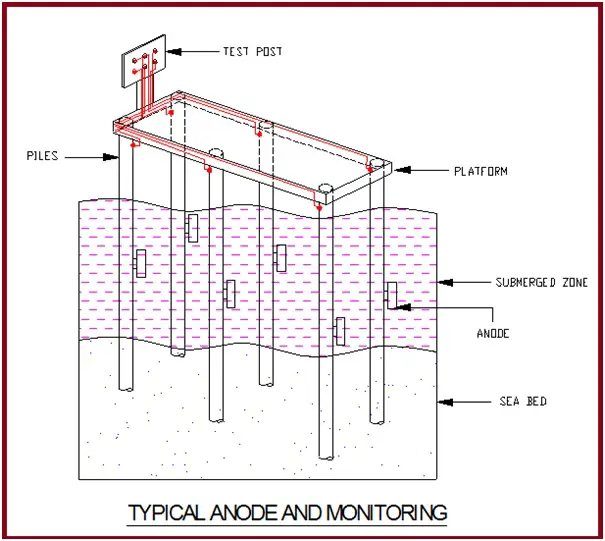
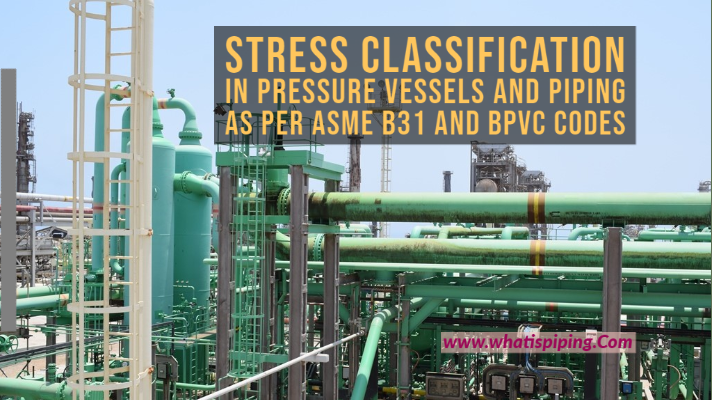

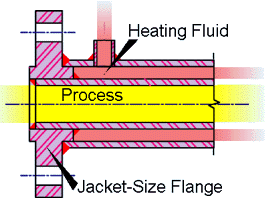
what is cold pull?
Refer the following post: https://processpiping.blogspot.com/2013/08/InfoASMEB31.3.html
Question no 9.
Cold spring and cold pull are same.
Refer the following post: https://processpiping.blogspot.com/2013/08/InfoASMEB31.3.html
Question no 9.
Cold spring and cold pull are same.
tnx bro…
Hi Anup,
I am thankful with you for building this very useful and interesting blog.
Are there the answers for these interviews in your blog?
Thank you
Thanks a lot for reading this website.. Keep visiting for more updates…
Yes..Answers are for you to find out…if you face any problem in any specific question you can reply in comments section..I will try to reply you back…
Dear Anup,
First of all , i really appreciate you works. This website is very helpful for beginners like me.
Can you post the answers for the above questions . This will helpful for beginners.
And once again thanks for your efforts and pls keep it.
Can anyone Explain the answer for Question” 4) Can you make a typical Sketch & supporting for column piping? How to decide how many load bearing clip supports to be used?”
Where is answers????
Thank you, this website is very usefull
Thank you very much….
Hello;
Hoy I can get al the questiins and answers?
Best regards
Ricardo flores